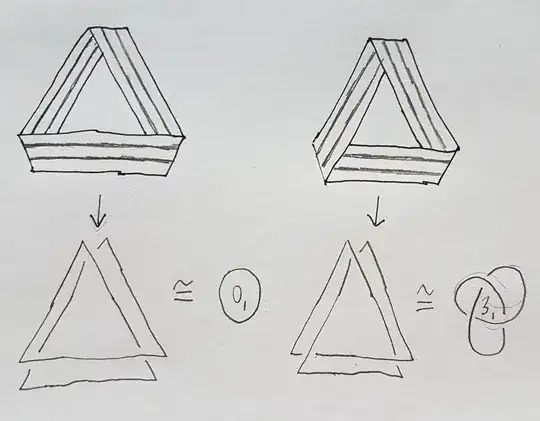At my workplace in the weekends we ususally play around with science and younger children. This months topic in mathemathics was a bit of soft topology. We of course made Möbius strips. What we called $\mathbf{a \ twist}$ was a $180^{\circ}$ rotation of the end of the strip before glueing. So $0$ twist is a ring of paper, $1$ twist gives the Möbius strip $2$ strips gives again an orientable surface (basically the ring "going around twice") and so on. I just wanted to clarify our terminology. After we understood what the word orientable means we of course started to cut the strips in half. The ring, cut along the centerline gave two similar rings, the Möbius strip gave a longer $4$ times twisted strip which is orientable. We understood why this happened (that is where the seemingly extra $3$ twists are coming from and why it resulted in one longer, connected strip). Some started cutting this again and we saw that we got two linked orientable surfaces. We also tried to cut the Möbius strip a bit off from the centerline and understood the result and why are the two resulting strips are linked. One thing we could't wrap our heads around is why, the $3$ times twisted strip ended up having a knot (a usual overhead knot)? We tried $5$ times twisted ones as well and we got more interesting looking knots on the strip.
I learned some undergraduate level topology at university but I have a hard time connecting that knowledge to this phenomena. I searched a bit here at MSE and found really helpful information altough nothing about this "knot story".
Could anyone explain this to me to some extent? Or could anyone give me some links maybe where I can find information about this? Generally I would be really happy to find some scientific description about this whole "cutting the Möbius strip". What operation is a cut for example?
